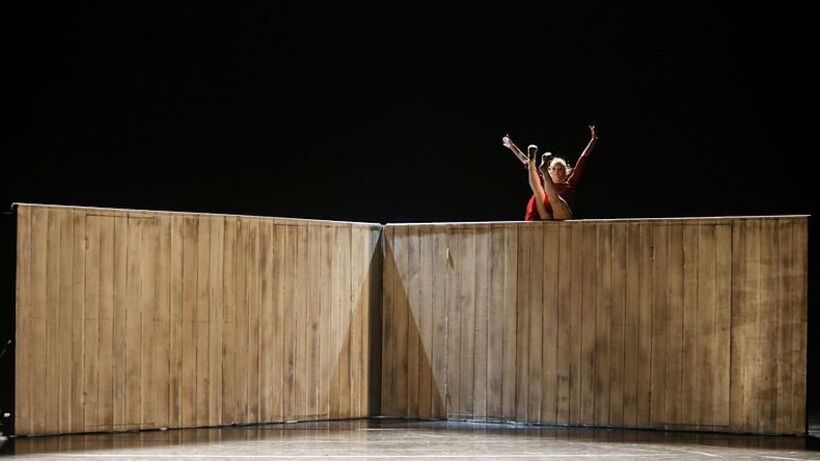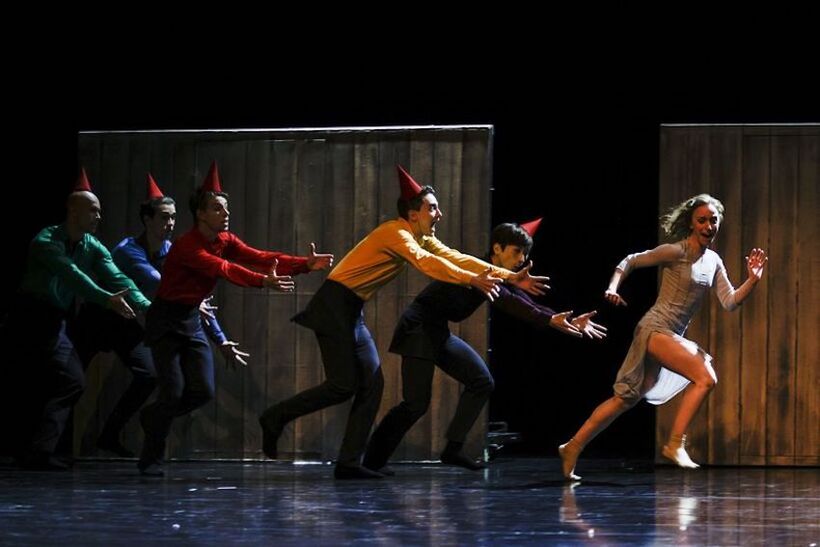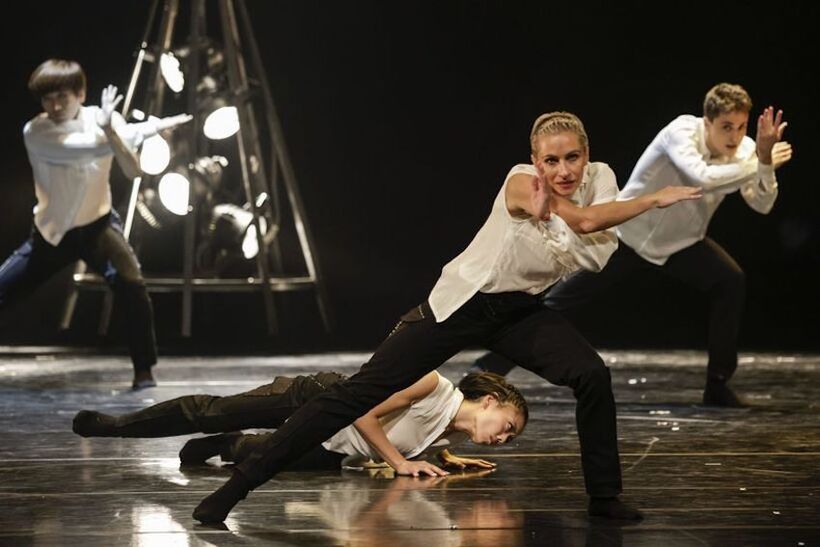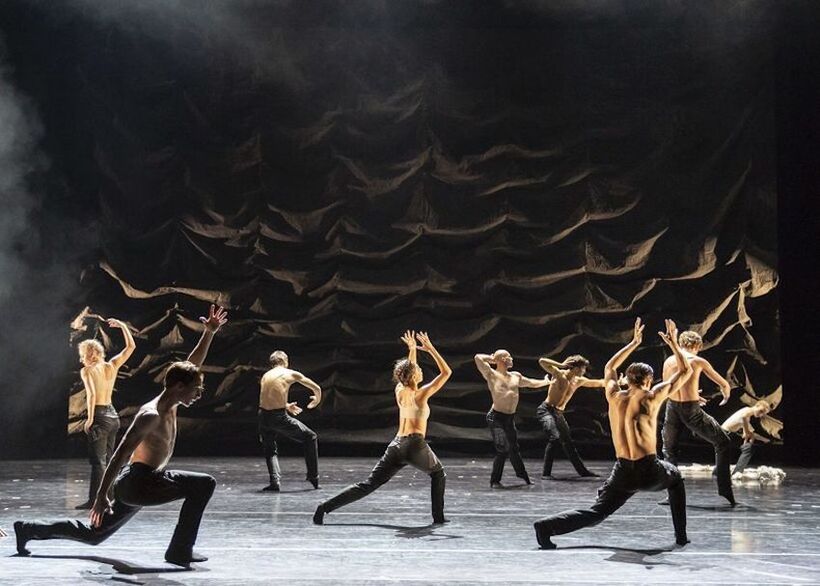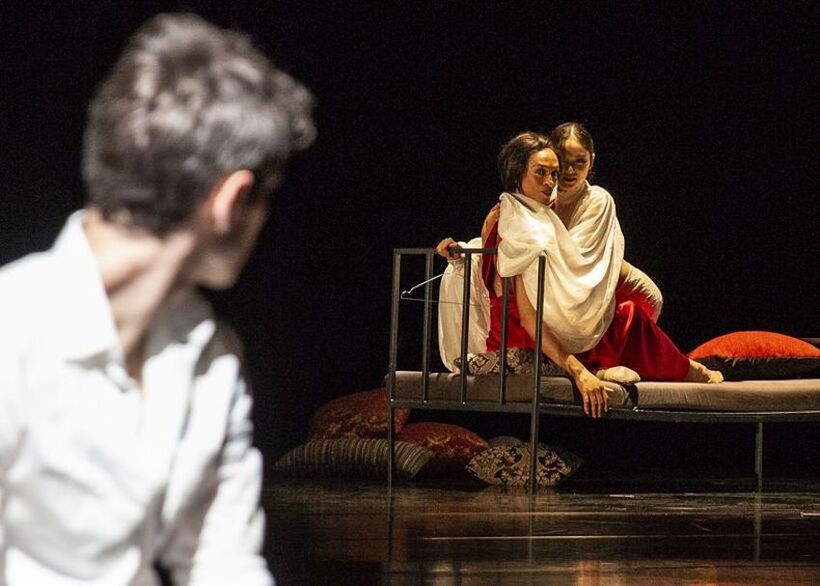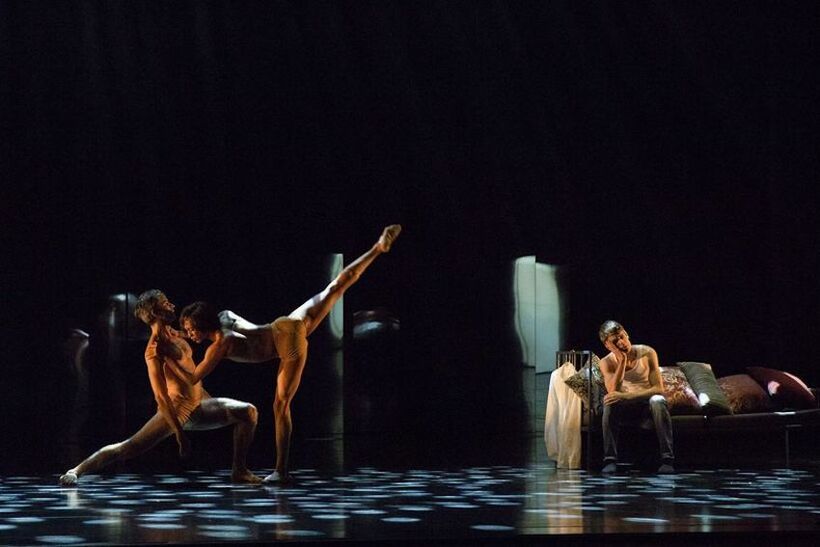Bolero In Brno Or Whatever Was Available
Unlike the previous one, filled with full-length shows, the new season of the Ballet of the National Theatre in Brno (NdB Ballet) focuses on mixed bills. The autumn premiere follows the effort of the NdB Ballet in presenting the contemporary repertoire and original productions as one-act ballets. Three choreographies – Walking Mad, Mountain Call, and Unanswered Question – were introduced in Bolero, the evening called after Ravel’s famous ballet. Three authors, three topics, and three various styles. Human relationships, getting back to the roots, and questions about one’s identity – this can be a brief description of the choreographies. However, the dramaturgy of the evening does not provide me with the connection or line that would interlink the works, so they do not become a random selection of shows that were available at that moment, with authors having a close relationship with the theatre house in Brno.
Walking Mad – the show full of emotions, spontaneity, and joy of dance
Ravel’s Bolero has been the piece that still disconcerts choreographers. It was originally composed as ballet music for dancer Ida Rubinstein, who asked Ravel to write a work of a Spanish character. The premiere took place in the Paris Opera in 1928, choreographed by Bronislava Nijinska; the piece itself can be considered the biggest crescendo in the history of music. It has been present on ballet stages all around the world ever since and has been a big creative challenge for the authors. Most choreographers focus on the ostinato rhythm and the growing energy of the music opus; the famous Swedish choreographer Johan Inger gets his own, innovative way. He created the opus for NDT in 2001. The work was on the repertoire in Brno back in 2019 as part of the mixed bills evening Petite Mort and was extremely successful with the audience.
One of the main assets of Inger’s choreography is a perfect balance between choreography and theatre effects. Dancers share the stage with a moving wall, which is the main scenographic element that defines and divides the space, making it possible to create several various scenes and interactions. Dancers can also move the wall, jump on it, fall from it, move on it, hit it, disappear quietly, or jump into “the void”. Yet, at the same time, it symbolizes obstacles in human relationships. Inger managed to create a fascinating theatre story, both comic and tragic.
A man comes on the stage and finds himself in the countryside. We can hear the birds, dogs, and bells. A woman takes down the laundry and we can hear the first bars of Bolero. Thus, we move to the imaginary rampart, and a bizarre, nearly surrealist story begins to unfold. We witness many playful and comical moments, crazy ideas, and sketches full of unrestrained joy, such as remotely passing the hats over the wall or entourages of “horny” jokers in colorful hats. However, it is not so funny when we see a woman looking for comfort, who is harshly manipulated by the growing number of men. The role of the company is becoming more important, the atmosphere is more dramatic, and a random guest is drawn into the increasing madness. The coats fly in the air and… There comes the biggest surprise of the choreography: a beautifully intimate and emotional duet accompanied by Arvo Pärt’s minimalist music follows and we find out that Bolero was only a prologue for the final catharsis of reconciliation.
Walking Mad had the same strong impression on me like when I saw it for the first time. Thanks to Inger’s imaginative and crazy choreography and the zeal of the dancers (three women and six men), the rejuvenated ballet company proved that its members are full of spontaneity, activity, and emotions, and they deal with contemporary dance perfectly and enthusiastically. A staggering trip indeed.
Mountain Call – folklore inspiration and harmony of dance and music
The choreographer of the piece Dan Datcu has worked with the NdB ballet company before as a dancer and a choreographer in Contrasts and Amadeus MozArt at the Reduta theatre. In his recent choreography Mountain Call, Datcu focuses on exploring folklore topics in the contemporary context. His Romanian roots have influenced the music as he employs stylizations of the
Balanescu Quartet. Having mentioned this, I need to remember the guest performance of the Slovene National Ballet Maribor in 2019, which had a show at the Dance Brno festival and we could find out more about Edward Clug’s The Mountain. Clug, too, has Romanian roots and used the recordings of the string quartet, founded by the Romanian violin virtuoso Alexander Balanescu. The fragile and sensitive music, based on folk motives, brings a special dreamy atmosphere. It is a great source of inspiration for Mountain Call.
Folklore used to be closely associated with the most important moments in the life of an individual and society. It accompanies people in joy and sorrow. Speaking of the hectic life nowadays that distances and estranges us from the world of nature, this reminder is more than timely. Datcu says in the brochure: “The performance explores everyday and forgotten rituals and entices the discussion about what was back then and what is now.” It examines the topics of birth, marriage, life, and death.
The prologue starts with “mountain calling” behind a transparent curtain where we can see four girls dance their ritual dance as a ceremony of monumentality that surpasses us. The mountains are only foreshadowed by smoke and lights. The girls alternate angular, round and wavy movements. Then the light takes us to the proscenium, where a boy lies on black plastic film and we can only hear the bird sing. We find out we witness the moment of birth – creeping and beastly movements that end up in baptism with ritual hand washing. The whole group dances in the second act based on wedding rituals. The choreographer carefully alters passages with miming and dance. He often uses the principle of the circle as the awareness of togetherness. It is rather unusual to use two married men as the main couple. A metallic art object comes down on the stage set by Marek Hollý: the object seems to be an hourglass or a sheaf with spotlights inside, which symbolize the power of solar energy. The group dances at a unified pace and celebrates life as it is with great energy. In the end, we can hear their intermittent and rhythmic breathing. There comes death and the time of silence. The dancers get rid of their shirts, we can see the image of Pieta, accompanied by dark thoughts, crying, the need for interconnection, and feelings for one another.
Unified choreography can be described with innovative choreographic features that give an unbelievably smooth impression. We can feel dynamism and spontaneity in the moments of movement synchronization. The connection with music is unconditional as well. Inconspicuous costumes (Alexandra Grusková) do not distinguish between the female and male elements – black trousers and low-key white shirts in various designs. The extraordinary light design (Dan Datcu and Marek Hollý) provides the show with a mysterious atmosphere or direct attack. Datcu’s original and promising choreography was created sensitively.
Unanswered Question – searching one’s soul and sparkly visual form
Mário Radačovský, the choreographer and ballet director, makes us think about the topic that has been discussed a lot recently. Society nowadays does not accept the traditional status of a man and woman and often discusses the issues of gender identity and contradictoriness. When I read about the topic in the brochure, I was intrigued about how the choreographer interprets the foreshadowed birefringence with masculine and feminine elements in various mixes. Sadly enough, I waited and saw a descriptive story of a young man, oscillating between love for a woman and an implied possibility of homosexual love or acceptance of transgender identity.
The first glimpse at the stage when we see a realistic bed and fridge suggests that we will see a motion/theatre rather than a dance performance. A boy wearing jeans and a top “contemplates” on a bed when suddenly his loved one appears in a sparkly dress. Then comes a love duet interpreted in a not very inventive neoclassical manner, along with the symbol or fruit of their love – an orange that is used several times in the choreography, multiplying. The main character is buried in them, when he opens the fridge, crushes them in despair, and drinks their juice. The young man is attracted by women and men – he seems to be a voyeur of a homosexual duet at one point. The woman (Se Hyun An) recognizes the betrayal and leaves with his transsexual girlfriend to the sparkly, tinsel world, while the young man stays alone with his unanswered question.
The director’s concept is based on acts that are interconnected by the character of the main hero (Arthur Abram). He either directly participates in the plot or searches his soul downstage. The chamber duets alter with wanna-be funny group scenes, which represent the outer world that desires a lavish lifestyle and shallow enjoyment. The selection of music represents a varied, yet ambiguous mixture. There is classical music played on the piano, French chansons in the bar, or a corny song The Head that refers to the fact that the hero fancies men more. However, the piece features only little dance. Most of the dancing is done in duets, with the homosexual vibe dance being one of the most interesting ones, performed by Thoriso Magongwa and Martin Svobodník. The scene featuring the encounter with a transsexual is based only on grand gestures and imitation of singing.
The visual design done by the same people as in the previous choreography (stage design by Marek Hollý, costume design by Alexandra Grusková) gives a sparkly impression with a kitschy vibe, including the blinking colorful heart, a bowl for oranges wrapped in gold, and pink costumes for male dancers. Even though the dancers try to fulfill the choreography as far as their performances are concerned, they are not able to find a way to the audience’s souls and emotional harmony. It is not their fault, though. They cannot save unimaginative choreography and descriptive directing.
The new premiere of the ballet company in Brno leaves us with many questions. I guess it would be better to think about dramaturgy more and try to put together the triptych with a more specific topic, rather than common relationships? And when such an evening does exist, it would be advisable to rank the choreographies according to growing quality and gradation. The premiere night offered the very opposite.
Written at the premiere on 23 September 2022 at the Janáček Theatre in Brno.
Walking Mad
Music: Maurice Ravel (Bolero), Arvo Pärt (Für Alina, for piano)
Choreography, stage, and costume design: Johan Inger
Light design: Erik Berglund
Staging: Carl Inger
Cast: Barbora Bielková, Emilia Vuorio, Klaudia Radačovská, Shoma Ogasawara, João Gomes, Arthur Abram, Manuele Bolzonello, Bence Kaszab, Ilya Mironov
Original premiere: 17 May 2001, NDT; Czech premiere: 11 May 2019, National Theatre Brno
Mountain Call
Music: Balanescu Quartet
Choreography: Dan Datcu
Stage design: Marek Hollý
Costume design: Alexandra Grusková
Light design: Dan Datcu, Marek Hollý
Cast: Ivona Jeličová, Klaudie Lakomá, Klaudia Radačovská, Anna Yeh, Arthur Abram, Manuele Bolzonello, Robert Koch, Shoma Ogasawara, Bence Kaszab, Rin Isomura
Premiere: 23 September 2022
Unanswered Question
Music: Armand Amar, Claude Debussy, Alice Fredenham, Pierre Lapointe, Peter Bič Project, Yann Tiersen
Choreography: Mário Radačovský
Stage design: Marek Hollý
Costume design: Alexandra Grusková
Light design: Mário Radačovský, Marek Hollý
Soloists: Arthur Abram, Se Hyun An, Thoriso Magongwa, Martin Svobodník
Premiere: 23 September 2022




